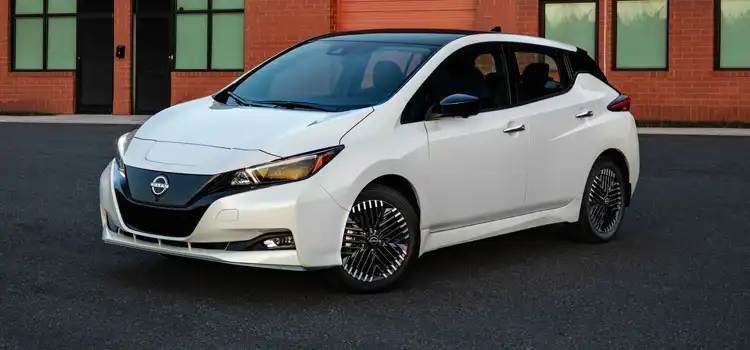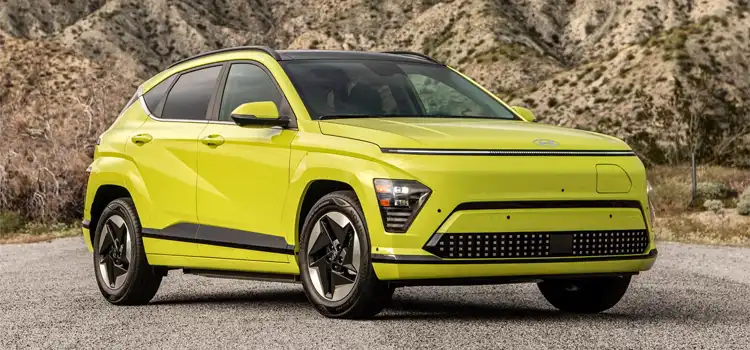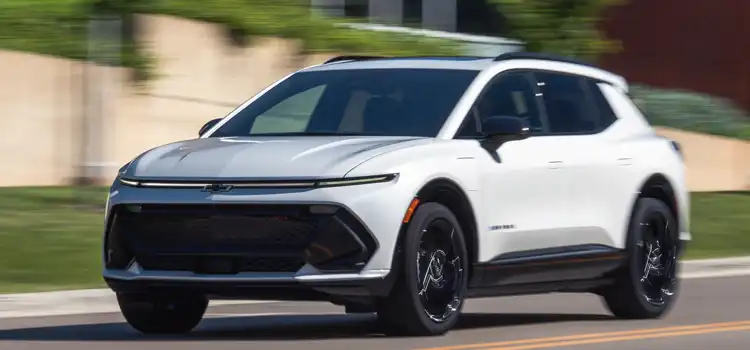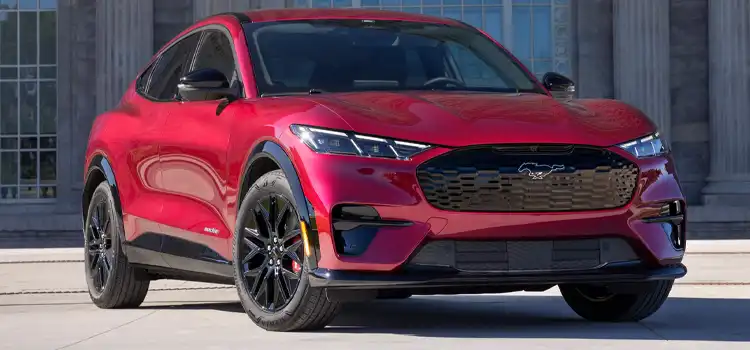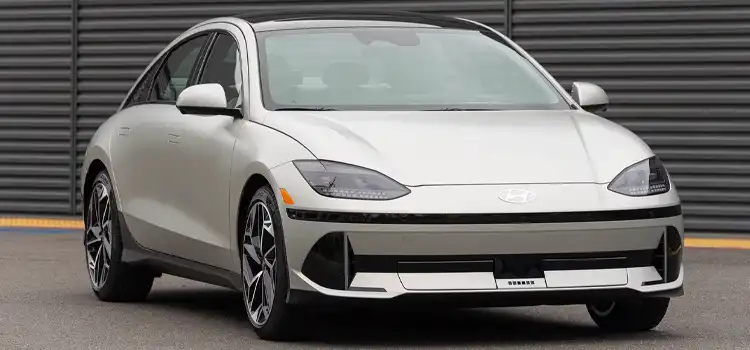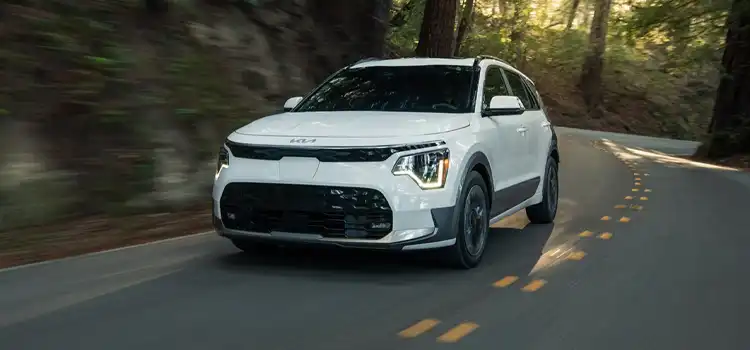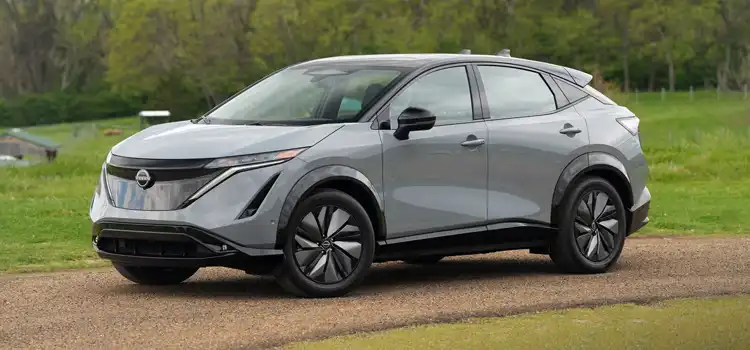Most Affordable Electric Cars of 2025
by Tyler Castle
27.8 min read
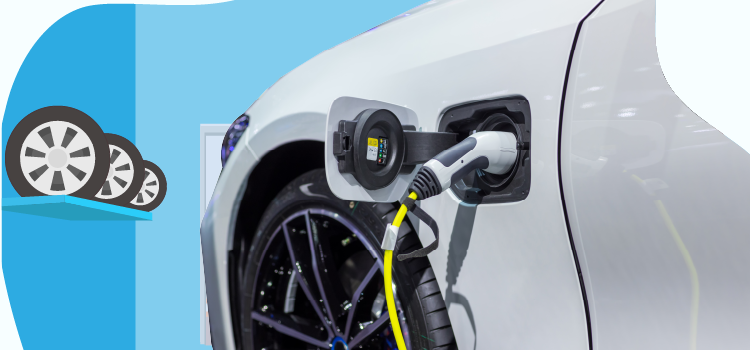
Electric vehicles (EVs) are no longer just a futuristic concept—they're here, and they're becoming more accessible than ever. With rising fuel costs, growing climate awareness, and more federal and state incentives on the table, 2025 is shaping up to be a breakthrough year for budget-conscious EV buyers.
Whether you're making the switch to your first electric car or upgrading to a newer model, affordability doesn't have to mean sacrificing quality, style, or range. In fact, automakers are expanding their lineups with feature-rich, wallet-friendly EVs designed for every lifestyle—from city commuters to road trip adventurers. Let's dive into the most affordable electric cars of 2025!
Most Affordable Electric Cars
2025 Nissan Leaf (Price starts at $28,140)
The 2025 Nissan LEAF continues its legacy as one of the most accessible all-electric vehicles in the U.S. market. Offering two battery options, modern driver-assist technology, and a smooth, city-friendly ride, it’s a dependable EV choice for eco-conscious commuters and first-time electric car buyers.
With a starting option offering up to 149 miles of range and a larger battery model reaching up to 212 miles, the LEAF delivers practical performance for everyday commuting. Its smooth acceleration, quiet ride, and available e-Pedal driving system make city driving effortless, while standard safety features like Automatic Emergency Braking and Blind Spot Warning enhance peace of mind. Add in quick DC charging capability and spacious seating for five, and the LEAF proves you don’t have to sacrifice comfort or tech to own an accessible, all-electric car making it on the list of least expensive electric car models.
Quick Thoughts on the 2025 Nissan LEAF
| Pros of the 2025 Nissan LEAF | Cons of the 2025 Nissan LEAF |
| Affordable Entry into EV Ownership
Competitive Pricing: With a starting MSRP of $28,140, the LEAF remains one of the most budget-friendly electric vehicles available, making it accessible for a wide range of buyers. |
Limited Driving Range
Range Constraints: The base model offers an EPA-estimated range of 149 miles, while the SV Plus variant provides up to 212 miles. These figures fall short compared to many competitors that offer ranges exceeding 250 miles. |
| Comfortable and Quiet Ride
Smooth Driving Experience: The LEAF offers a relaxed and quiet ride, providing a comfortable environment for both city commutes and longer journeys.
|
Outdated Fast-Charging Port
CHAdeMO Connector: The LEAF utilizes the CHAdeMO fast-charging standard, which is becoming less common in North America, potentially making it more challenging to find compatible fast-charging stations. |
| User-Friendly Technology
Intuitive Infotainment: Equipped with a straightforward infotainment system, the LEAF ensures that drivers can easily access essential features without a steep learning curve. |
Slower Charging Speeds
Charging Limitations: The LEAF’s maximum DC fast-charging capacity is 50 kW, resulting in longer charging times compared to newer EVs that support higher charging rates. |
| Standard Safety Features
Comprehensive Safety Suite: The 2025 LEAF comes standard with numerous driver-assist technologies, including automatic emergency braking, blind-spot monitoring, and lane departure warning, enhancing overall safety. |
Interior Quality and Design
Dated Cabin Aesthetics: The interior materials and overall design feel somewhat outdated, lacking the premium feel found in some rival electric vehicles. |
| Depreciation Concerns
Resale Value: The LEAF has been noted to depreciate more rapidly than some competitors, which could impact long-term ownership costs. |
2025 Hyundai Kona Electric (price starts at $32,975)
The 2025 Hyundai Kona Electric is a sleek, compact SUV that combines everyday practicality with modern electric performance. Offering up to 261 miles of range, fast charging, advanced tech features, and Hyundai’s trusted 10-year battery warranty, it’s designed for drivers who want an affordable and efficient EV without sacrificing style or comfort.
The Kona Electric delivers responsive handling, quick acceleration, and a smooth, quiet ride—perfect for both urban commutes and weekend getaways. It also comes packed with advanced driver-assist features like Forward Collision-Avoidance Assist and Lane Keeping Assist, making safety a top priority. With roomy seating for five, versatile cargo space, and fast-charging capabilities, the 2025 Kona Electric proves that going electric can be both practical and exciting—without breaking the bank.
Quick Thoughts on the 2025 Hyundai Kona
| Pros of the 2025 Hyundai Kona Electric | Cons of the 2025 Hyundai Kona Electric |
| Excellent Value and Affordability
Competitive Pricing: The Kona Electric offers a compelling price point, providing a suite of features and performance that represent strong value in the EV market. |
Limited Performance in Base Model
Modest Acceleration: The base model’s performance may feel underwhelming compared to some rivals, particularly in terms of acceleration and handling dynamics. |
| Spacious and Practical Interior
Roomy Cabin and Cargo Space: The redesigned model boasts increased dimensions, resulting in a more spacious interior for passengers and enhanced cargo capacity, making it practical for daily use and longer trips. |
Charging Speed Considerations
Slower Fast-Charging: The Kona Electric’s fast-charging capabilities are not as rapid as some competitors, which could be a factor for users who frequently rely on public charging stations. |
| Advanced Technology and Safety Features
Comprehensive Tech Suite: Equipped with modern technology, including a user-friendly infotainment system and a host of driver-assistance features, enhancing both convenience and safety. |
No All-Wheel Drive Option
Front-Wheel Drive Only: The absence of an all-wheel-drive variant may be a drawback for buyers in regions with challenging weather conditions or those seeking enhanced traction. |
| Comfortable Ride Quality
Smooth Driving Experience: The Kona Electric delivers a comfortable and composed ride, with a suspension system that effectively absorbs road imperfections. |
Material Quality in Interior
Use of Hard Plastics: Some interior materials, such as hard plastics on the dashboard and door panels, may not meet the expectations of buyers seeking a more premium feel. |
2025 Chevrolet Equinox EV (Price starts at $33,600)
The 2025 Chevrolet Equinox EV is Chevy’s newest all-electric compact SUV, designed to deliver impressive range, everyday practicality, and family-friendly tech at an affordable price. With up to 319 miles of range, fast charging, and available all-wheel drive, it’s a standout choice for first-time EV buyers and loyal Chevy fans alike.
With fast charging capabilities that can add about 70 miles in just 10 minutes and the option for all-wheel drive, the Equinox EV is built for both daily commutes and weekend adventures. Inside, it boasts roomy seating for five, generous cargo space, and tech-forward features that make driving both safe and convenient which is why this model is know as one of the most affordable electric cars.
Quick Thoughts on the 2025 Chevrolet Equinox EV
| Pros of the 2025 Chevrolet Equinox EV | Cons of the 2025 Chevrolet Equinox EV |
| Competitive Pricing and Strong Value
Affordable Starting Price: With a base price of $33,600, the Equinox EV offers an attractive entry point into the electric SUV market. |
Limited Performance in Base Model
Modest Acceleration: The front-wheel-drive variant’s performance may feel underwhelming compared to rivals, with a 0-60 mph time of approximately 8.0 seconds. |
| Impressive Electric Range
Extended Driving Range: The front-wheel-drive model provides an EPA-estimated range of 319 miles, surpassing many competitors in its class. |
Charging Speed Considerations
Slower Fast-Charging: The Equinox EV’s peak DC fast-charging rate of 150 kW is lower than some competitors, resulting in longer charging times. |
Modern Design and Spacious Interior
|
Infotainment System Limitations
No Apple CarPlay or Android Auto: Lacks support for these popular smartphone integration systems, relying instead on built-in Google-based infotainment. |
| Advanced Technology Features
Super Cruise Availability: Optional hands-free driving assistance enhances highway driving convenience. |
Reduced Cargo Space Compared to Gas Model
Smaller Cargo Capacity: Offers less cargo space than the gasoline-powered Equinox, which may be a drawback for some buyers. |
2025 Ford Mustang Mach-E (Price starts at $36,495)
The 2025 Ford Mustang Mach-E is a bold all-electric SUV that delivers Mustang-inspired performance with everyday practicality. With up to 320 miles of range, fast charging, and thrilling acceleration—especially in the GT trims—it offers a sporty, high-tech ride for drivers ready to go electric without giving up excitement.
Whether you choose rear-wheel or all-wheel drive, the Mach-E provides a sporty, smooth ride with responsive handling. It also features roomy seating for five, a generous 59.7 cubic feet of cargo space with the rear seats folded, and a front trunk (frunk) that’s both washable and drainable for added utility making this model one of the most affordable electric cars this year.
Quick Thoughts on the 2025 Ford Mustang Mach-E
| Pros of the 2025 Ford Mustang Mach-E | Cons of the 2025 Ford Mustang Mach-E |
| More Affordable Starting Price
The base Select trim starts at $36,495, making it significantly more competitive in the EV SUV market than previous model years. |
Charging Network Compatibility Still CCS
No NACS (Tesla plug) yet for 2025, which may limit seamless access to Tesla Superchargers until adapters are rolled out. |
| Strong Driving Range Options
Offers up to 320 miles of range (Premium RWD Extended Range), which is excellent for road trips and daily commutes alike. |
Infotainment and Software Glitches
Few users report occasional lag or bugs in the touchscreen interface—though updates and OTA fixes are improving this. |
| Performance-Oriented Trims
GT and GT Performance models deliver up to 480 horsepower and 0–60 in ~3.5 seconds, giving it true Mustang-like performance. |
Interior Material Quality Varies
While visually appealing, some trims still use hard plastics in high-touch areas, making it feel less premium than rivals like the Ioniq 5 or Volvo EX30. |
| New Standard Heat Pump
Improves cold-weather efficiency and range stability—a key advantage for EVs in northern climates. |
Not the Fastest Charging EV
Fast-charging tops out at 150 kW, which is good but not class-leading. Rivals like the Hyundai Ioniq 6 charge faster (up to 350 kW). |
| Updated BlueCruise with Automatic Lane Change
Enhances Ford’s hands-free driving tech on pre-mapped highways—great for long-distance cruising. |
Rear Visibility Can Be Limited
The sporty design comes with a small rear window and thick rear pillars, which may affect visibility when backing up (although a 360° camera helps). |
| Spacious and Versatile Interior
Generous rear-seat legroom (38.1”), plenty of cargo space (up to 59.7 cu. ft.), and a frunk (front trunk) add daily practicality. |
|
| Stylish, Muscle-Inspired Design
The Mach-E retains Mustang-inspired styling and sporty road presence, unlike more utilitarian EVs in its class. |
2025 Toyota bZ4X (Price starts at $37,070)
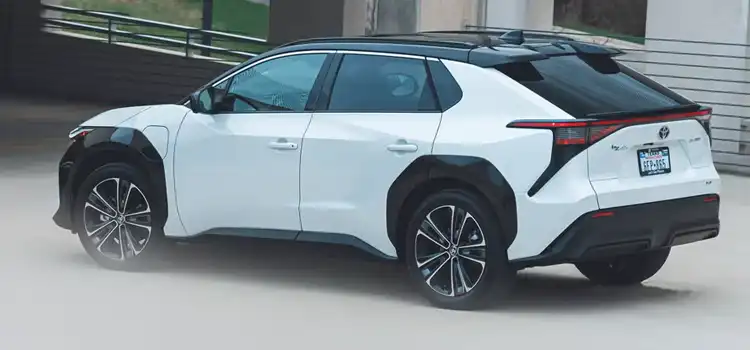
The 2025 Toyota bZ4X is Toyota’s all-electric SUV that blends clean, modern design with everyday practicality and advanced safety features. With up to 252 miles of range, smooth ride quality, and Toyota’s trusted reliability, it’s an approachable EV for drivers making the switch to electric and looking for some of the least expensive electric car models.
Fast charging capabilities—up to 150 kW on front-wheel drive models—allow for a 10% to 80% charge in around 30 minutes, keeping downtime to a minimum. Inside, the bZ4X comfortably seats five with ample front legroom and up to 56.1 cubic feet of cargo space when the rear seats are folded. This model also comes with a 63.4-kWh battery pack in the single-motor version and a 65.5-kWh pack in the dual-motor model for awesome power and long range.
Quick Thoughts on the 2025 Toyota bZ4X
| Pros of the 2025 Toyota bZ4X | Cons of the 2025 Toyota bZ4X |
| Smooth and Quick Acceleration
The bZ4X offers a smooth ride with responsive acceleration, providing an enjoyable driving experience. |
Limited Driving Range
With a maximum EPA-estimated range of up to 252 miles, the bZ4X falls short compared to some competitors offering longer ranges. |
| Agile and Responsive Handling
Drivers appreciate its agile handling, making it well-suited for both city driving and highway cruising. |
Slow Charging Times
Charging speeds are modest, with DC fast charging capabilities up to 150 kW for FWD models, resulting in longer charging sessions compared to rivals. |
| Spacious and Comfortable Cabin
The interior is roomy, offering ample space for passengers and cargo, enhancing overall comfort. |
Lacks One-Pedal Driving Feature
Unlike some EVs, the bZ4X does not offer a true one-pedal driving mode, which can enhance regenerative braking and driving convenience. |
| Comprehensive Safety Features
Equipped with Toyota Safety Sense™ 3.0, the bZ4X includes features like Pre-Collision System with Pedestrian Detection and Lane Tracing Assist, contributing to a safe driving environment. |
Instrument Cluster Visibility Issues
Some drivers have reported that the instrument cluster can be hard to see, potentially impacting the driving experience. |
| Improved Affordability
The 2025 model has received a significant price reduction, with starting prices around $38,465, making it a more attractive option in the EV market. |
2025 Hyundai Ioniq 6 (Price starts at $37,850)
The 2025 Hyundai Ioniq 6 is a sleek, all-electric sedan that blends futuristic design with long-range efficiency and cutting-edge technology. With up to 361 miles of range and ultra-fast charging, it’s built for drivers who want performance, comfort, and sustainability in one aerodynamic package.
What really sets the IONIQ 6 apart is its cutting-edge 350 kW DC fast charging capability, which can take the battery from 10% to 80% in just around 18 minutes when using a compatible charger. Inside, the sedan offers exceptional comfort with 42.3 inches of front legroom and a spacious 45.4 inches in the rear—perfect for passengers on long drives making the Hyundai Ioniq 6 one of the least expensive electric cars this year.
Quick Thoughts on the 2025 Hyundai Ioniq 6
| Pros of the 2025 Hyundai Ioniq 6 | Cons of the 2025 Hyundai Ioniq 6 |
| Exceptional Electric Range
Extended Driving Distance: The Ioniq 6 offers an EPA-estimated range of up to 361 miles on the SE Long Range RWD model, surpassing many competitors in its class. |
Limited Cargo Space
Trunk Capacity: The Ioniq 6 offers 401 liters of trunk space, which is less than some rivals like the BMW i4 and Tesla Model 3, potentially limiting storage for luggage or larger items.
|
| Rapid Charging Capabilities
Efficient Charging: Equipped with 800-volt architecture, the Ioniq 6 can charge from 10% to 80% in approximately 18 minutes using a 350 kW DC fast charger, facilitating quick turnarounds during long trips. |
Reduced Rear Headroom
Sloping Roofline Impact: The aerodynamic design results in a sloping roofline that can compromise rear headroom, making it less comfortable for taller passengers. |
| Engaging Driving Dynamics
Responsive Performance: The Ioniq 6 delivers a smooth and engaging driving experience, with agile handling and responsive acceleration that make it enjoyable to drive. |
Polarizing Exterior Design
Subjective Aesthetics: While distinctive, the unique styling of the Ioniq 6 may not appeal to all buyers, as its design is quite different from traditional sedans. |
| Distinctive and Aerodynamic Design
Unique Styling: The vehicle’s sleek, aerodynamic silhouette not only enhances efficiency but also sets it apart visually from other EVs on the market. |
|
| Advanced Technology Features
Modern Infotainment: The Ioniq 6 is equipped with a user-friendly infotainment system, featuring dual 12.3-inch displays, Apple CarPlay, and Android Auto compatibility. |
2025 Subaru Solterra (Price starts at $38,495)
The 2025 Subaru Solterra is the perfect all-electric SUV for adventurous drivers who need both rugged capability and eco-friendly performance. With standard all-wheel drive and an EPA-estimated range of up to 227 miles, the Solterra is ready for long trips or off-road exploration without sacrificing comfort or convenience. The Solterra is equipped with fast-charging capabilities, adding 10% to 80% charge in about 35 minutes, and a cold-weather optimized system to maintain performance in low temperatures making this Subaru model one of the most affordable electric cars this year.
Quick Thoughts on the 2025 Subaru Solterra
| Pros of the 2025 Subaru Solterra | Cons of the 2025 Subaru Solterra |
Standard All-Wheel Drive with Off-Road Capability
|
Limited Driving Range
Range Constraints: With an EPA-estimated range of up to 227 miles, the Solterra falls short compared to competitors like the Hyundai Ioniq 5 and Kia EV6, which offer longer ranges. |
Spacious and Comfortable Interior
|
Slower Charging Speeds
Charging Time: While improved, the Solterra’s DC fast-charging capability allows a 10% to 80% charge in approximately 35 minutes, which is slower than some rivals that can achieve similar charges in under 20 minutes. |
| Comprehensive Standard Features
Well-Equipped Trims: Even the base Premium trim includes features like keyless entry and start, dual-zone climate control, wireless Android Auto and Apple CarPlay, and heated front seats. |
Lack of Front Trunk (Frunk)
Storage Limitations: Unlike some EV competitors, the Solterra does not offer a front trunk, limiting additional storage options. |
| Smooth and Peppy Performance
Dual-Motor System: The Solterra’s dual-motor setup delivers a combined 215 horsepower and 249 lb-ft of torque, providing smooth and responsive acceleration suitable for city and highway driving. |
Regenerative Braking Settings Reset
Inconvenient Defaults: The regenerative braking system resets to its weakest setting upon each startup, requiring drivers to adjust it manually every time. |
2025 Kia Niro EV (Price starts at $39,600) (Wind)
The 2025 Kia Niro EV is a versatile all-electric crossover that blends impressive range, advanced safety tech, and everyday practicality. With up to 253 miles of EPA-estimated range and a roomy, high-tech cabin, it’s an ideal choice for eco-conscious drivers seeking comfort and value in a compact SUV.
Charge time with a DC fast charger takes 43 minutes to charge up to 80%. This spacious vehicle seats up to five passengers with leg room of 41.5 inches and rear legroom of 36.9 inches making this Kia model one the most affordable electric cars this year.
Quick Thoughts on the 2025 Kia Niro EV
| Pros of the 2025 Kia Niro EV | Cons of the 2025 Kia Niro EV |
Spacious and Practical Interior
|
Slower Charging Speeds
Limited Fast-Charging Capability: The Niro EV’s maximum charging rate is lower than some competitors, resulting in longer charging times during road trips. |
| Comprehensive Standard Features
Advanced Technology: Equipped with a user-friendly infotainment system and a suite of driver-assistance features, enhancing both convenience and safety. |
Firm Ride Over Rough Surfaces
Ride Comfort on Bumpy Roads: The ride can feel firm and less comfortable over uneven or rough road surfaces. |
| Comfortable Ride Quality
Smooth Driving Experience: The Niro EV delivers a comfortable and composed ride, with a suspension system that effectively absorbs road imperfections. |
No All-Wheel Drive Option
Front-Wheel Drive Only: The absence of an all-wheel-drive variant may be a drawback for buyers in regions with challenging weather conditions or those seeking enhanced traction. |
| Competitive Driving Range
Sufficient Range for Daily Use: Offers a respectable driving range that meets the needs of most daily commuters. |
2025 Nissan Ariya (Price starts at $39,770)
The 2025 Nissan ARIYA is a sleek, all-electric crossover that combines modern design, impressive range options, and advanced driver-assist tech. With up to 304 miles of range and available all-wheel drive, it’s built for drivers who want both everyday comfort and long-distance capability in a premium EV package.
This model can charge from 20% to 80% in 35 minutes under optimal conditions with a DC Fast Charger with a battery size of 63 kWh.
Quick Thoughts on the 2025 Nissan Ariya
| Pros of the 2025 Nissan Ariya | Cons of the 2025 Nissan Ariya |
Upscale and Spacious Interior
|
Higher Price Point
Premium Pricing: The Ariya’s starting price is higher than some competitors, and it may not qualify for federal tax credits due to its manufacturing origin. |
| Smooth and Comfortable Ride
Refined Driving Dynamics: The Ariya delivers a quiet and composed ride, prioritizing comfort over sporty performance. |
Mediocre Driving Dynamics
Lack of Sportiness: While comfortable, the Ariya’s driving experience is described as less engaging, lacking the spirited performance found in some rivals. |
| Competitive Electric Range
Varied Range Options: Depending on the trim, the Ariya offers an EPA-estimated range between 205 to 289 miles, accommodating different driving needs. |
Limited Cargo Space
Reduced Storage Capacity: The sleek design impacts cargo volume, offering less space compared to some competitors. |
Advanced Technology Features
|
Charging Infrastructure Challenges
Adapter Requirement for Tesla Superchargers: Utilizing Tesla’s Supercharger network requires a specific adapter and an additional plastic insert for the Ariya, adding complexity to the charging process. |
2025 Tesla Model 3 (Price starts at $44,130)
The 2025 Tesla Model 3 is a sleek, high-efficiency electric sedan that blends cutting-edge tech, impressive range, and sharp performance. Even though the price of this vehicle costs a little more that other models, the Tesla Model 3 makes up in distance and features. With up to 363 miles of range and a refreshed, more refined interior, it’s a standout choice for drivers looking to go electric without sacrificing style or speed.
The Long Range RWD model offers an impressive EPA-estimated range of up to 363 miles—making it one of the longest-range EVs in its price bracket. Thanks to Tesla’s Supercharger network, you can regain up to 195 miles of range in just 15 minutes, making road trips more convenient than ever.
Inside, the Model 3 comfortably seats five passengers with 42.7 inches of front legroom and 35.2 inches in the rear, along with a combined 21 cubic feet of cargo space, including the front trunk.
Quick Thoughts on the 2025 Tesla Model 3
| Pros of the 2025 Tesla Model 3 | Cons of the 2025 Tesla Model 3 |
| Industry-Leading Range
Up to 341 miles (AWD) and 363 miles (RWD) on a single charge, depending on the trim—ideal for both daily commutes and long road trips. |
No Apple CarPlay or Android Auto
Tesla uses its own infotainment system and does not support Apple or Android smartphone integration—even in 2025. |
| Supercharger Network Access
Seamless use of Tesla’s Supercharger network, with over 50,000 global chargers and charging speeds up to 250 kW. |
No Traditional Controls
Turn signals, gear shifting, and wipers are all managed through steering wheel buttons or the touchscreen—Tesla removed physical stalks completely. |
| Minimalist, High-Tech Interior
Features a sleek, simplified cabin with a 15.4″ center touchscreen, ambient lighting, and no stalks or shifter, designed for modern UX flow. |
Trunk-Only Hatch Design
Unlike hatchback EV competitors, the Model 3 has a traditional trunk, which limits vertical cargo access despite decent overall cargo space. |
| Built-in Tesla Safety Suite
Comes standard with Tesla’s Autopilot, plus active safety technologies like Emergency Braking, Collision Warning, and Blind Spot Monitoring. |
FSD Package
Full Self-Driving remains a costly add-on of $8,000. |
| Premium Performance and Handling
0–60 mph in as little as 3.1 seconds in the upcoming Performance trim (Long Range AWD: 4.2s) with dual-motor AWD and adaptive ride tuning. |
|
| Over-the-Air Updates
Software improvements are delivered remotely, enhancing vehicle features, performance, and even interface design over time. |
Things to Consider When Buying an Electric Car
Switching to an electric vehicle (EV) is an exciting move—but it comes with its own set of considerations. While EVs offer long-term savings and environmental benefits, it’s important to evaluate how they fit into your daily life and budget. Here are the key factors every smart shopper should consider before buying an EV in 2025:
Fuel Costs: How Much Will You Really Save?
EVs are far cheaper to “fuel” than gas-powered vehicles—but how much you save depends on your driving habits and local electricity rates. According to the U.S. Department of Energy, fueling a typical EV costs about 60% less per mile than fueling a gas vehicle. If you drive often or have a long commute, these savings can quickly add up. Some utility companies also offer discounted EV charging rates during off-peak hours, lowering your monthly cost even more.
If you’re looking to lower your total cost of ownership, purchasing an electric car might be one way you can do so.
Maintenance: Fewer Parts, Fewer Headaches
Unlike gas-powered cars, EVs don’t need oil changes, spark plugs, or transmission repairs. They have fewer moving parts, which means fewer things can go wrong. Consumer Reports found that EV owners typically spend 50% less on maintenance and repairs over the life of the vehicle. That said, it’s important to factor in battery maintenance and eventual replacement, though most automakers now offer 8 to 10-year battery warranties.
If you’re looking for a lower-maintenance car that saves you money and time in the shop, EVs can be a great option—but battery longevity is a must-check detail before purchase.
Depreciation: Not All EVs Hold Their Value Equally
EVs have historically depreciated faster than gas-powered vehicles, but that’s beginning to change. Models with strong range, brand reputation, and charging access are now retaining their value better. According to iSeeCars , the sharp decline in used electric vehicle prices across the U.S. is mainly the result of Tesla slashing prices on its new models, fueling a wider price competition in the EV market.
Since Tesla dominates EV sales in the U.S., its lower new car prices have made buyers less willing to pay similar amounts for used models, pushing down pre-owned EV values overall. If you plan to trade in or resell your car in a few years, you’ll want to choose a model with strong residual value—and that means looking at current resale trends before you buy.
Charging Infrastructure: Will It Fit Into Your Life?
Before buying an EV, ask yourself: Where will I charge it most of the time? If you have access to a garage or driveway, installing a Level 2 home charger can be a game-changer. But if you rely on public charging, availability and convenience will vary depending on your area.
As of the first quarter of 2025, the U.S. has around 74,627 electric vehicle charging stations nationwide..—and that number is growing fast thanks to federal funding. Apps like PlugShare, ChargePoint, and Electrify America can help you plan charging stops in real time. In the end, charging access can make or break your EV experience. Make sure your daily routine, local infrastructure, and road trip plans align with your charging options.
Cost of EV Ownership Over Time
While EVs offer savings in fueling and maintenance, higher insurance premiums and depreciation can offset these benefits. According to a 2024 analysis by Vincentric, 49% of EV models evaluated had a lower total cost of ownership over five years compared to their gasoline counterparts, indicating that the financial advantage of owning an EV varies significantly by model and individual circumstances.
Out of 41 electric vehicles analyzed, 19 managed to make up for their higher upfront cost within seven years—and eight of those didn’t require any payback period at all because their initial purchase price was already lower than that of their gas-powered counterparts.
How Much Federal Tax Credit Will I Get Upon Purchase of EV?
You could be eligible for up to $7,500 in tax credits if you buy a new EV or fuel cell vehicle that meets certain requirements. Thanks to updates from the Inflation Reduction Act of 2022, these credits apply to purchases made between 2023 and 2032.
This credit is available whether you’re buying the vehicle for personal use or through your business. But keep in mind—your income has to fall within certain limits to qualify. Here’s how much you’ll receive:
- Up to $300,000 if you’re married and filing jointly,
- Up to $225,000 if you’re the head of household,
- Up to $150,000 for everyone else.
The amount of the credit depends on how much of the vehicle is built using qualifying materials:
- $3,750 if it meets only the critical mineral requirement,
- $3,750 if it meets only the battery component requirement,
- Full $7,500 if it meets both.
If the EV doesn’t meet either requirement, unfortunately, it won’t qualify for the credit. To actually claim the credit, you’ll need to file IRS Form 8936 when you do your taxes, and you’ll also need to provide your vehicle’s VIN number.
Insurance Costs for EVs
When it comes to insurance, EVs are covered just like gas-powered cars—same types of policies, and you’re not penalized just for driving electric. But here’s the catch: because EVs usually have a higher price tag, more expensive repairs, and fewer repair shops that handle them, insurance companies often charge more to cover that extra risk. On average, you could end up paying up to 20% more in premiums compared to a similar gas vehicle.
EVs tend to have higher sticker prices, and in the insurance world, a more expensive vehicle means a potentially higher payout in the event of an accident or theft. Add to that the cost of replacing EV components like batteries, which can run anywhere from $5,000 to $16,000, and you begin to see why insurers calculate more risk into the equation.
Some insurers now offer discounts for EVs or for using advanced safety technologies like automatic emergency braking and lane-keeping assist—which are often standard in electric vehicles. Bundling policies or opting for usage-based insurance (pay-per-mile) can also help reduce costs.
How Long Do EV Batteries Last?
According to Car and Driver, most EV batteries are designed to last at least 8 to 10 years or 100,000 to 150,000 miles, which aligns with warranties provided by manufacturers like Tesla, Hyundai, and Nissan.
Many automakers even back their EV batteries with an 8-year/100,000-mile warranty, with some offering coverage up to 10 years/150,000 miles (like Hyundai)
They also note that battery degradation is gradual, with most EVs retaining over 70% to 80% of their original capacity after a decade, depending on usage, climate, and charging habits.
How Do You Charge an EV at Home?
Charging your EV at home is one of the most convenient and cost-effective ways to stay powered up. Most EV owners rely on either Level 1 charging (using a standard wall outlet) or upgrade to Level 2 charging (which requires a 240V outlet and offers much faster speeds).
While Level 1 works well for short daily commutes, Level 2 is ideal for those who want a full charge overnight or drive longer distances. Setting up a Level 2 charger at home typically involves working with a licensed electrician, choosing the right charger, and possibly applying for local incentives to reduce costs.
Read our full guide on charging an EV at home!
Tips for Buying a Used EV
Purchasing a pre-owned EV can offer significant savings and environmental benefits. However, it’s crucial to approach the process with diligence. Here are key considerations:
- Assess Battery Health: The battery is the heart of an EV, and its condition directly impacts performance and range. Over time, batteries can degrade, leading to reduced driving distances. Before finalizing a purchase, request a detailed battery health report. Some manufacturers provide specific diagnostics, while third-party tools can also offer insights into battery condition.
- Review Vehicle History: Obtain a comprehensive vehicle history report to uncover any past accidents, maintenance records, or title issues. This ensures transparency and helps assess the car’s overall condition.
- Understand Warranty Coverage: Many EVs come with warranties that extend to subsequent owners. Verify the remaining coverage on both the vehicle and its battery. Some manufacturers offer battery warranties up to eight years or a specific mileage, providing added peace of mind.
- Check Charging Compatibility: Ensure the used EV is compatible with your home charging setup and local charging infrastructure. Some older models may not support faster charging standards, which could influence your charging experience.
- Explore Financial Incentives: In certain regions, purchasing a used EV may qualify you for federal tax credits or local incentives.
Tips for Leasing An EV
Leasing an EV can be an attractive alternative to purchasing, especially given the rapid advancements in EV technology. Here’s what to keep in mind:
- Benefit from Tax Credits: Leasing often allows lessees to take advantage of federal tax credits that might not be available when purchasing. Leasing companies can apply these credits to reduce your monthly payments, making leases more affordable.
- Stay Current with Technology: EV technology is evolving rapidly. Leasing enables you to drive the latest models without committing to long-term ownership, ensuring access to new features and improved performance.
- Consider Mileage Limits: Leases come with mileage restrictions, typically ranging from 10,000 to 15,000 miles annually. Exceeding these limits can result in additional fees. Assess your driving habits to choose a lease agreement that aligns with your needs.
- Evaluate End-of-Lease Options: At the conclusion of your lease, you’ll have the option to return the vehicle, purchase it at a predetermined residual value, or lease a new model. Understanding these options upfront can help you plan accordingly.
- Negotiate Lease Terms: Just like purchasing, lease terms can be negotiated. Discuss factors such as the capitalized cost, money factor (interest rate), and residual value with the dealer to secure favorable terms.
As electric vehicles continue to gain traction, understanding the full scope of ownership—from purchase price to maintenance and charging—is key to making the most of your investment. Whether you’re buying new, going pre-owned, or leasing, the EV landscape in 2025 has more options and incentives than ever before.
And while you’re upgrading your drive, why not upgrade your energy too? At Santanna Energy Services, we offer flexible and competitive electricity plans designed to keep your home—and your EV—powered with confidence. Whether you charge overnight or during off-peak hours, our plans can help you maximize your savings and energy efficiency. Explore our Unlimited Energy plans today!
Tyler is an experienced energy professional, having worked for Santanna Energy Services, for the past four years. He is passionate about renewable energy and believes that diversifying the energy grid is the key to a sustainable future. Tyler is dedicated to supplying consumers with the best possible energy solutions and works diligently to make sure that Santanna can deliver the highest quality service.


